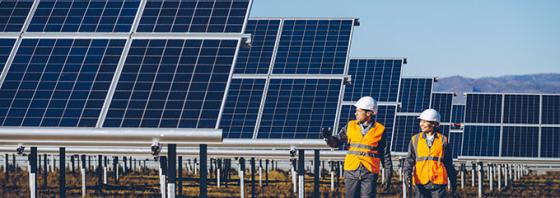Green Building Community
Energy Efficiency and Solar Energy Can Help Make Housing Affordable Again, ACEEE Report Suggests
Posted by: Eileen Flynn // Student

Many people view green building as an extra expense to an already difficult experience of finding somewhere to live, and afford to live. However, the American Council for an Energy-Efficient Economy (ACEEE) has released a report called "Our Powers Combined: Energy Efficiency and Solar in Affordable Multifamily Buildings" suggesting that energy efficiency and solar energy aren't more expensive than other apartment options and in fact can help families save money and reverse the decline in affordable housing. In summarizing the report, ACEEE Senior Research Analyst Stefen Samarripas explains how building owners combine energy efficiency upgrades and rooftop solar systems to reduce energy use and therefore lower energy bills. As a result, housing can be more affordable and healthy for building occupants. Stefens also summarizes the example of Foundation Communities, an affordable housing provider in Austin, Texas. In 2012, the company installed a rooftop solar system, energy efficient lamps, heat pump air conditioners with occupancy sensors, and metal roofing to save energy, and also undertook water conservation measures. Today, these building utility costs are one-quarter less than a typical multifamily property. If more people are aware of the benefits energy efficient solar systems bring to a family financially and a community ecologically, green building should grow even more rapidly in more affordable housing. There are however admittedly some challenges that must be overcome to implement these strategies more widely. One challenge the Foundation Communities and others encountered was if building staff and residents didn’t understand how to properly use and maintain these green buildings, the energy and solar equipment were less likely to deliver optimal results. This challenge can be overcome to a large extent with sufficient training and education. A second challenge is the requirement of additional planning and development costs. Costs can be reduced through economies of scale and also through more experience with related projects. Finally, Stefens points out however that "affordable housing providers cannot go it alone." Indeed, there must be supportive policies and programs to help providers learn more and implement these strategies. The US Department of Housing and Urban Development (HUD) now offers reduced mortgage insurance premiums for green energy-efficient housing, and some state housing finance agencies (HFAs) incentivize or require that projects pursuing Low-Income Housing Tax Credits reduce a building’s energy use. To view the ACEEE report, "Our Powers Combined: Energy Efficiency and Solar in Affordable Multifamily Buildings" and to learn about other case studies, visit: http://aceee.org/research-report/u1804 To learn more: http://aceee.org/blog/2018/05/affordable-housing-disappearing http://aceee.org/blog/term/34
Please be kind and respectful!
Please make sure to be respectful of the organizations and companies, and other Rate It Green members that make up our community. We welcome praise and advice and even criticism but all posted content and ratings should be constructive in nature. For guidance on what constitutes suitable content on the Rate It Green site, please refer to the User Agreement and Site Rules.
The opinions, comments, ratings and all content posted by member on the Rate It Green website are the comments and opinions of the individual members who posts them only and do not necessarily reflect the views or policies or policies of Rate It Green. Rate It Green Team Members will monitor posted content for unsuitable content, but we also ask for the participation of community members in helping to keep the site a comfortable and open public forum of ideas. Please email all questions and concerns to admin@rateitgreen.com

